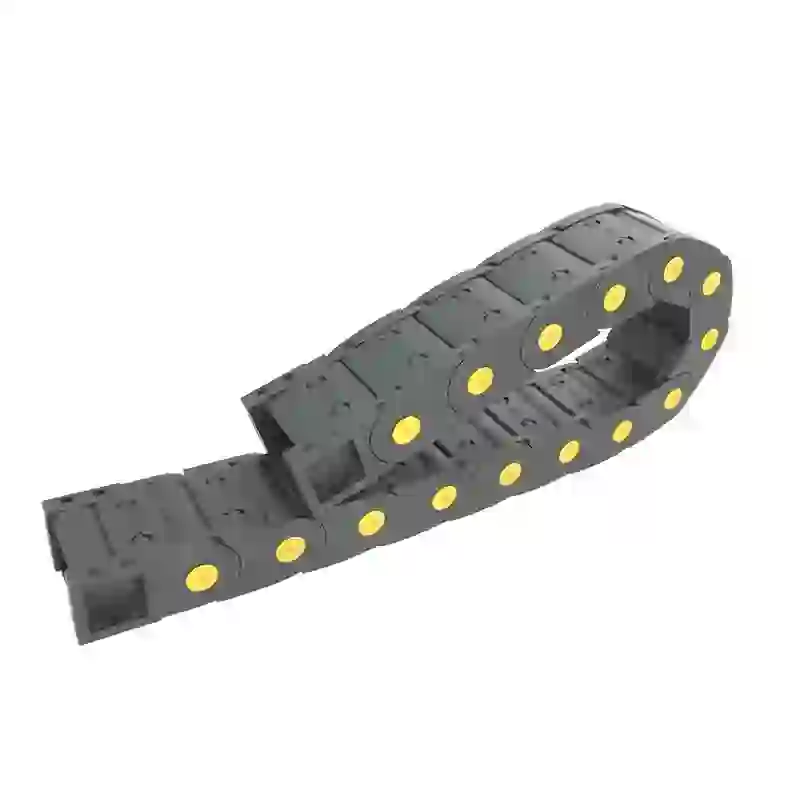Cable Management Solutions for Efficient Hoist Operations and Safety Improvements
Cable Carriers for Hoists Enhancing Efficiency and Safety
In the world of material handling and lifting operations, hoists play a crucial role in the movement of heavy loads. They are employed in various industries such as construction, manufacturing, and shipping. To ensure the smooth operation of these hoists, an often-overlooked component is the cable carrier, also known as a drag chain or energy chain. This article will delve into the significance of cable carriers, their design considerations, and their role in improving efficiency and safety in hoist applications.
Understanding Cable Carriers
A cable carrier is a structural assembly that contains and manages the cables and hoses associated with a hoist system. These carriers are designed to protect cables from wear and tear, dirt, and other environmental factors, extending the lifespan of the cables and enhancing the overall reliability of hoisting equipment.
Cable carriers are typically made from durable materials such as plastic or metal and come in various shapes and sizes to accommodate different types of cables and hoses. They allow for flexibility and movement while ensuring that cables do not get tangled or damaged during operation.
The Importance of Cable Carriers in Hoists
1. Protection Against Wear and Tear Cables used in hoisting applications are subjected to significant stress and movement. Without a cable carrier, these cables can rub against surfaces, leading to fraying and eventual failure. A properly designed cable carrier can absorb this movement and protect the cables, ensuring they function optimally over their intended lifespan.
2. Improved Efficiency By organizing and containing the cables, cable carriers streamline the operation of hoists. This leads to faster and more efficient lifting processes, as the cables remain free from entanglement and are easily guided as the hoist operates. In high-demand environments, such as manufacturing plants, this efficiency can translate to significant time and cost savings.
3. Enhanced Safety Safety is a top priority in any lifting operation. By enclosing and securing the cables, cable carriers reduce the risk of tripping hazards and accidental tangling that can lead to workplace injuries. Furthermore, protecting the cables from damage lowers the chances of electrical failures or mechanical malfunctions, enhancing overall safety during operations.
cable carrier for hoist

4. Versatility and Customization Modern cable carriers can be customized to meet specific requirements of different hoisting applications. Whether it's a heavy-duty hoist or a lightweight, portable solution, manufacturers offer a range of options that can be tailored to fit various cable arrangements, lengths, and load capacities. This versatility ensures that operators can find a suitable solution for their unique challenges.
Design Considerations for Cable Carriers
When selecting a cable carrier for hoist applications, several design considerations should be taken into account
- Load Capacity It is crucial to choose a cable carrier that can support the weight of the cables and the dynamic loads they will experience during operation. Manufacturers typically provide specifications regarding load limits.
- Environmental Factors The operational environment can greatly influence the choice of materials and the design of cable carriers. For instance, if the hoist operates in harsh conditions with exposure to chemicals, moisture, or extreme temperatures, selecting carriers made from resistant materials is essential.
- Travel Distance The length of the cable run will determine the type and size of cable carrier needed. Longer travel distances may require additional supports or reinforced carriers to maintain cable organization and minimize wear.
- Motion Type Consider whether the hoist will operate in a linear path or require rotational movement. Some cable carriers are specifically designed for certain types of motion, ensuring optimal performance.
Conclusion
Cable carriers are an essential component of hoist systems, contributing to the efficiency, safety, and reliability of lifting operations across various industries. By protecting cables from damage and ensuring smooth movement, they play a vital role in maintaining the effectiveness of hoisting equipment. When selecting a cable carrier, careful consideration of factors such as load capacity, environmental conditions, and operational requirements can lead to informed decisions that enhance both performance and safety in the workplace. Investing in quality cable carriers will not only prolong the life of the hoist system but also foster a safer working environment for operators and support staff alike.








